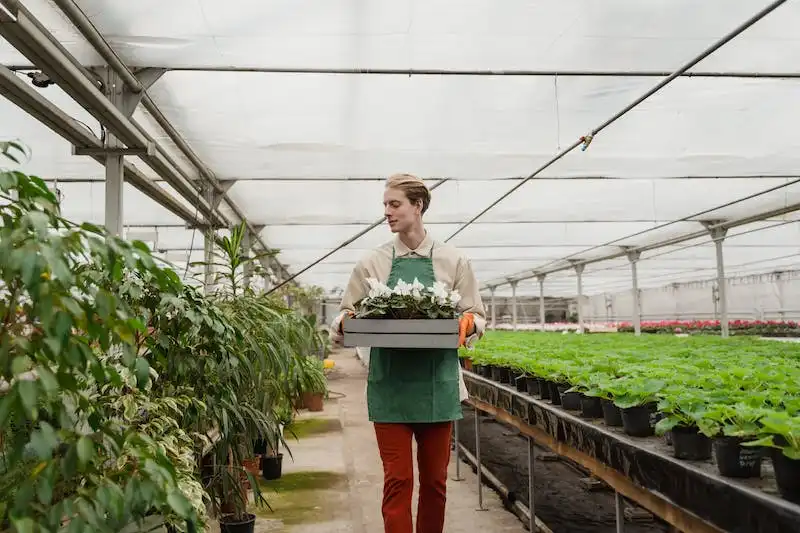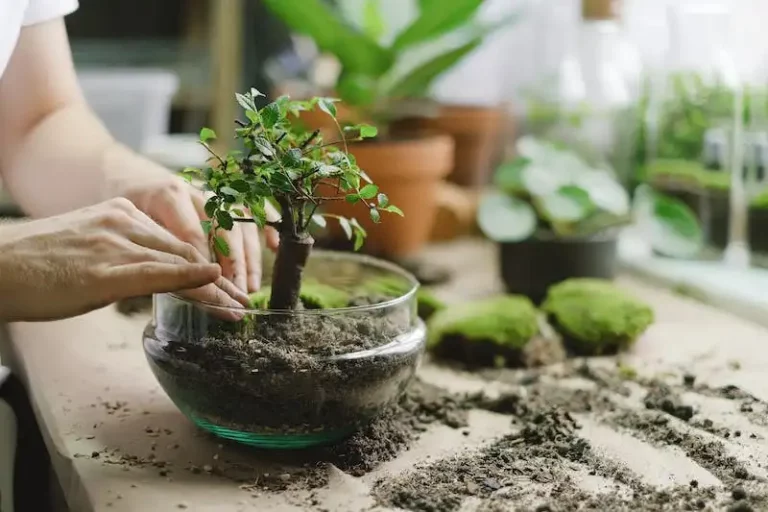Growing an apple tree can be a rewarding and enjoyable experience. The apple tree is always a popular choice among gardeners due to its beauty and the delicious fruits it produces. Whether you are an experienced gardener or just starting out, planting and caring for an apple tree is a great addition to any garden.
When choosing a location for your apple tree, it is important to consider a few factors. Apple trees thrive in full sun, so make sure to select a spot that receives at least six to eight hours of direct sunlight per day. The soil should be well-drained and rich in nutrients to ensure the tree’s health. It is also important to consider the climate of your region. Apple trees are generally hardy and can withstand cold winters, but selecting a cold-hardy variety is necessary if you live in an area with harsh frost.
Once you have selected the perfect location, it is time to plant your apple tree. Start by digging a hole that is wide and deep enough to accommodate the roots of the tree. Carefully remove the tree from the container, being sure to keep the roots intact. Gently place the tree in the hole, making sure that the tree is straight and upright. Backfill the hole with soil, firming it gently around the base of the tree to ensure good root-to-soil contact.
After planting, it is important to water the tree thoroughly. Newly planted trees need consistent moisture to establish their roots. Provide enough water to keep the soil moist, but be careful not to overwater as this can lead to root rot. Mulching around the base of the tree will help retain moisture and suppress weeds. It is also recommended to stake the tree to provide support and to protect it from strong winds.
Caring for your apple tree involves regular pruning, fertilizing, and pest control. Prune the tree in late winter or early spring to remove dead or damaged branches and to shape the tree. Fertilize the tree in early spring, using a balanced fertilizer that is specifically formulated for fruit trees. Keep an eye out for common pests such as aphids, caterpillars, and apple maggots, and take appropriate measures to control them.
To ensure proper pollination and fruit production, make sure to plant more than one variety of apple tree. Apple trees need cross-pollination to produce fruit, so having at least two different varieties will increase the chances of successful pollination. Be sure to select varieties that bloom around the same time to ensure compatibility.
In conclusion, planting an apple tree requires some planning and care, but with the right knowledge and preparation, you can enjoy the beauty and bounty of this delightful tree. By choosing the right location, planting properly, and providing the necessary care, you can ensure the health and success of your apple tree for years to come.
Apple Tree Planting Guide: Growing An Apple Tree In Your Yard
When you are a new grower, planting an apple tree can seem like a daunting task. However, with the right knowledge and some basic steps, you can easily grow a healthy and productive apple tree in your yard. In this guide, we will walk you through the process of planting an apple tree and provide you with all the information you need to ensure success.
Choosing the right time to plant: Apple trees are best planted in autumn, when the weather starts to cool down. This timing allows the tree to establish its roots before the ground freezes. It is important to note that apple trees require a period of dormancy during winter, so planting in spring or summer is not recommended.
Choosing the right variety: Apple trees come in a wide range of varieties, each with their own characteristics and requirements. When selecting a variety, consider factors such as the climate in your area, the size of your yard, and your personal preference for apple flavor and appearance. It is recommended to choose disease-resistant varieties, as they are less prone to common apple tree diseases.
Preparing the soil: Apple trees require well-draining soil with a pH level between 6.0 and 7.0. Before planting, test the soil in your yard and amend it if necessary. You can improve soil drainage by adding organic matter such as compost or peat moss.
Planting the tree: Start by digging a hole that is twice as wide and just as deep as the tree’s root ball. Place the tree in the hole, ensuring that the graft union (the swollen area where the scion and rootstock meet) is above the soil line. Fill the hole with soil, gently firming it around the roots. Water the tree thoroughly after planting to settle the soil and eliminate air pockets.
Providing care: Newly planted apple trees require regular watering, especially during their first growing season. Mulching around the base of the tree can help conserve moisture and suppress weed growth. Fertilize the tree in early spring and again in late spring, following the instructions on the fertilizer package. Prune the tree in late winter or early spring to promote healthy growth and remove any damaged or diseased branches.
Dealing with common problems: Apple trees are susceptible to a range of diseases and pests, including apple scab, powdery mildew, and aphids. Monitor your tree regularly for signs of disease or pest damage, and take appropriate action if needed. Regularly inspect the base of the tree for any signs of damage or weakness, as this can indicate the presence of disease or pests.
Harvesting your apples: The timing of apple harvest varies depending on the variety and local climate. Generally, apples are ready for harvest when they have reached their full color and can be easily twisted from the branch. For the best flavor, apples should be picked when the temperature is between 50 and 60 degrees Fahrenheit.
Growing an apple tree in your yard can be a rewarding experience. By following these guidelines and providing the necessary care, you can enjoy delicious homegrown apples for years to come. Whether you are a seasoned gardener or a beginner, planting an apple tree is a great way to enhance your outdoor space and enjoy the beauty and bounty of nature.
Soil for Growing an Apple Tree
Choosing the right soil is essential for the successful growth of an apple tree. The soil should be well-drained and fertile, with a pH level between 6.0 and 7.0. Sandy loam or loamy soil is ideal for apple trees.
Before planting the apple tree, you need to prepare the soil. Start by digging a hole that is twice as wide and deep as the root ball of the tree. Remove any grass or weeds from the area. It is also a good idea to add some organic matter, such as compost or well-rotted manure, to improve the soil’s fertility.
When planting the apple tree, make sure the stake is at least 18 inches long and is securely anchored in the ground. This will provide support to the young tree and prevent it from bending or breaking under strong winds. Place the stake in the hole before filling it with soil.
After planting the tree, make sure to water it thoroughly. The soil needs to be evenly moist, but not waterlogged. Avoid overwatering, as this can lead to root rot and other diseases. During the first year, keep the area around the base of the tree free from weeds to avoid competition for nutrients.
Apple trees require pollination from another variety of apple tree in order to produce fruit. It is important to choose a compatible apple variety for cross-pollination. Research the blooming times and compatibility of different apple varieties to ensure proper pollination.
Apples trees also require a period of vernalization, which is exposure to cold temperatures during their dormant period. This helps the tree’s buds develop and become ready for flowering. The duration of vernalization varies depending on the apple variety. In general, apples require at least 800-1000 chill hours below 45°F to properly set fruit.
Caring for an apple tree involves regular watering, mulching, and fertilizing. Water the tree deeply once a week, especially during dry spells. Apply a layer of mulch around the base of the tree to help retain soil moisture and suppress weed growth. Fertilize the tree in early spring and late autumn with a balanced fertilizer to promote healthy growth and fruit production.
Pruning is necessary to shape the tree, remove dead or diseased branches, and improve air circulation. Prune the tree during the winter when it is dormant. It is best to leave pruning to the professionals if you are not confident in your pruning skills.
Apple trees can take several years to mature and start producing fruit, so be patient. Once the tree starts bearing fruit, it is important to thin the apples to avoid overcrowding. If there are too many apples on the tree, they will be small and not as flavorful.
If you are trying to grow an apple tree in a container, make sure to choose a dwarf or semi-dwarf variety that is suitable for container gardening. Container-grown apple trees need well-draining soil, regular watering, and occasional fertilizing. They can be moved indoors during the winter to protect them from frost.
In conclusion, growing an apple tree requires careful consideration of the soil, timing, pollination, and proper care. Whether you are planting in your yard or in a container, providing the best conditions for your apple tree will increase its chances of healthy growth and fruit production.
How Do You Plant Apple Trees
Planting apple trees can be a rewarding experience for both experienced and novice growers. Whether you are trying to grow your own fruit or simply want to add some beauty to your yard, apple trees can thrive in a wide range of climates and soil conditions.
Before planting, it’s important to know which apple varieties are best suited for your region’s climate. Some varieties require a certain number of chill hours each winter in order to produce fruit, while others can survive in milder winter climates. Check with local growers or consult a published guide to determine the best varieties for your area.
When planting apple trees, choose a site that receives full sun and has well-drained soil. The soil should be amended with organic matter and have a pH level that is slightly acidic to neutral. Avoid planting in areas that are prone to standing water or have heavy clay soil.
The spacing between apple trees is crucial for their health and production. The exact spacing will depend on the rootstock used, but in general, trees should be spaced 15 to 20 feet apart. This allows for proper air circulation and prevents overcrowding.
When planting containerized apple trees, dig a hole that is wider and slightly shallower than the root ball. Gently remove the plant from its container and place it in the hole, making sure the graft union is positioned 2 to 3 inches above the soil line. Backfill the hole with soil, firming it gently around the roots.
After planting, it’s important to water your apple tree thoroughly. Young trees need regular watering, especially during dry spells. However, be careful not to overwater, as this can lead to root rot. Mulch around the base of the tree to help conserve moisture and suppress weed growth.
Apple trees require regular fertilization to promote healthy growth and fruit production. Apply a balanced fertilizer in early spring and again in late summer. Be sure to follow the manufacturer’s instructions for application rates.
Pruning is an important part of apple tree maintenance. Remove any diseased or damaged branches, as well as any that are growing towards the center of the tree. Prune in late winter or early spring before the tree begins to bloom.
Apple trees require cross-pollination in order to produce fruit. If you are planting just one tree, choose a self-fertile variety. Otherwise, plant multiple varieties within close proximity to ensure successful pollination.
Finally, be prepared for the weather. Apple trees are not tolerant of extremely cold temperatures and may require winter protection, especially in regions where temperatures dip below freezing. Consider installing a stake or using a tree wrap to protect the trunk from cold damage.
By following these tips and caring for your apple trees properly, you can enjoy a bountiful harvest of delicious apples for years to come.




